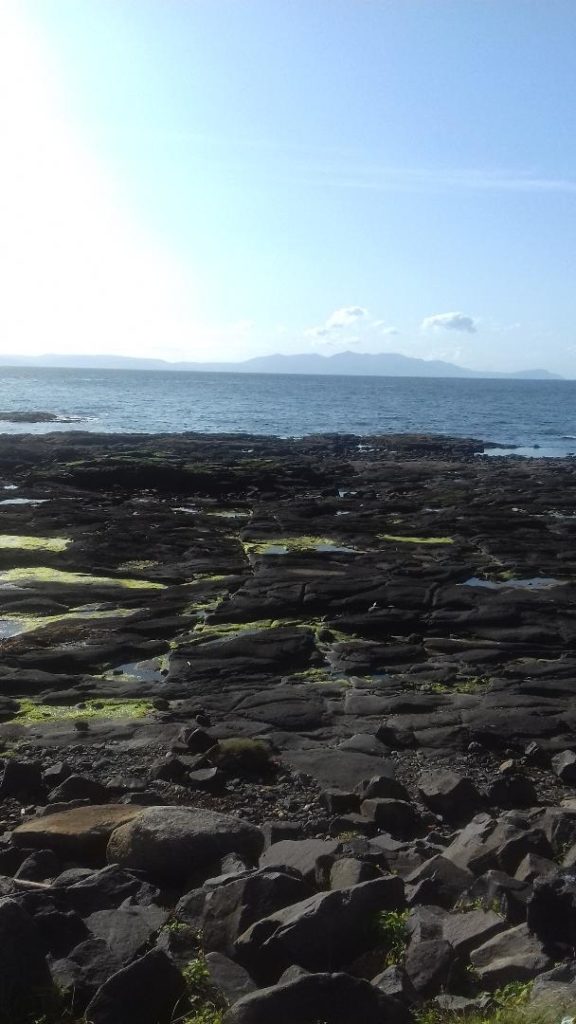It’s time once again for the annual series of postings we like to call Shadows and Reflections, in which our contributors and friends look back on the past twelve months. From Joe Devlin:

The year began with confirmation of dates for a solo show, my first since 2013, at Studio 2, Todmorden. We settled upon April 6th for the opening. The first three months of 2019 involved finalising the work for this. Here, an opportunity to extend thanks and support to Matthew Houlding for his exacting and meticulous approach, a continued, unwavering interest in the sculptures and his uncompromising drive to produce a carefully considered programme for the space.
I intend to focus on three exhibitions visited over the past twelve months – which were also packed with a number of brilliant live shows, engaging art and interesting events. Too numerous to mention in full here, but highlights of which, in no particular order, included – Lee Patterson, Hen Ogledd, White Fence, Rhodri Davis, the Tusk festival, Julia Kent, everything I went to see at the Brudenell Social – Leeds, Trades club – Hebden Bridge and the White Hotel – Salford.
Late April we made our way from Manchester to Blackburn, for the preview of Dean Hughes’s work held at PRISM gallery. This a precursor to his London exhibition at Laure Genillard. It consisted of a number of subtle, small-scale objects made from a variety of everyday materials, including hole punch pieces, sunken floorboards and shelves and boxes constructed from the grey cardboard backings of writing pads.
Process is paramount to Hughes, summed up in the following statement – “It’s important that the works have a connection to my hand, I don’t feel comfortable with things bigger than my hand. I prefer to make things by hand; they have to be made by me…I think that’s all artists have – the process of making things they don’t understand.” The slow train home affording ample time to ruminate upon the work, materiality and the act of making.
Early June, we attended the opening of Louise Giovanelli’s new paintings at Manchester Art Gallery, an exhibition I have revisited on numerous occasions. Her paintings, shown alongside early Renaissance panel paintings and a selection of contemporary works by Victor Man and Mark Manders, set up dialogues and revealed influences. The artist states – “the works are a gentle confrontation. They foreground sensorial possibilities, primarily visual – seeing into as opposed to projecting onto. They are not demands they are suggestions”. A generous, thoughtful and multi-layered show.
We found ourselves travelling deserted roads in August, through rods of rain under a bruise coloured sky, via the wild beauty of the forest of Galloway, a microcosm of Scotland, to Thornhill for our visit to Cample Line. Around two miles from our destination, just outside Penport, a hillside sandstone cairn came into view, pinecone in form, built to mark the new millennium by Andy Goldsworthy, sitting a stone’s throw from his Dumfriesshire home. The menhir shape of Dalarran Holm, seen earlier that day, echoed in this elevated work.
Upon arrival at the gallery, we met with Briony, offering us a much-welcomed cup of tea. Thrown into the mix, a chance encounter with an old friend, the artist Jonathan Owen, who had travelled down for the day from Edinburgh with his family to see the exhibitions. Two shows were on ‘Double Act’ by David Osbaldeston and ‘Farm Weeds’ by Charlie Hammond.
The upstairs space consisted of a series of large-scale half-tone prints, each around two metres high and a sequence of smaller gouache paintings on pages from George Vasey’s ‘The Philosophy of Laughter and Smiling’. The larger prints, ‘Untitled (Generalised laughter series)’, sat in pairs, like huge open tomes, every piece consisting of a propped ‘ruler’ with variation in pattern from one to the next, a system of signs, a different label or descriptor at the base of each, evolving from the artists interest in measurement and how this is applied to language.
An amazing gallery housed in an old mill, in a stunning setting, Cample Line is a space with an ambitious programme well worth investigating. As we were leaving the grounds David arrived, we ended up sinking drinks, served through a small hatch, in a Moniaive beer garden together, the music festival occurring in the neighbouring pub providing the perfect backdrop.
A period that attests to the pertinence of continued engagement with ideas, especially those determined by inner logic. The value of a community that quietly espouses poesis and propositions. Of relationships between things brought into the world that would not ordinarily exist, the recurrence of the artists’ hand, the need to make and consider. Of not knowing and discovering through play and process.